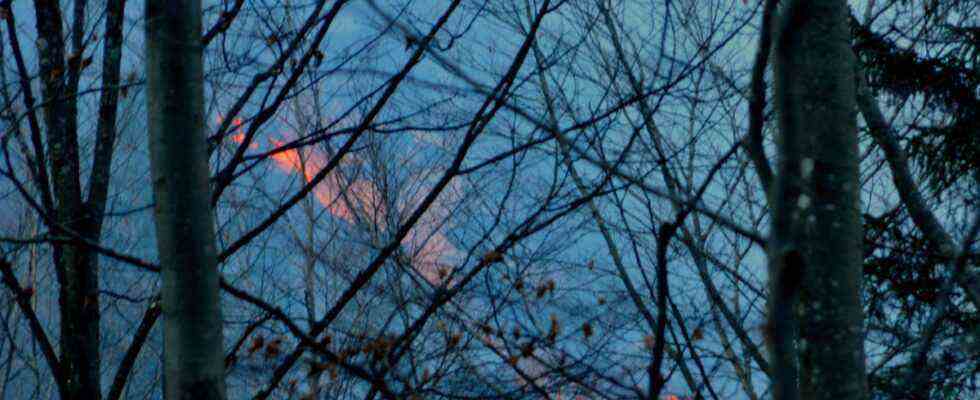It will take decades for nature to regain what a fire destroyed in a few hours. The Bavarian State Forests alone have replanted more than 6000 tree saplings, including mainly pines, but also high-altitude spruce and whitebeams, on the Graseck high above the Kochelsee. Under difficult conditions in extremely steep, light forest terrain with mountain pines, some of which are centuries old. The team from the state forests at Bad Tölz could only work on the mountain, explains its manager Rudolf Plochmann. After all, the forest, which was badly affected by the big fire five years ago, is developing very positively, he says. “But the forest will need decades to fully recover.”
Two hikers climbed to the Jochberg on New Year’s Eve 2016/17. It was clear and starry when the two Munich residents – 37 and 33 years old at the time – reached the rocky promontory of the Gamsköpfl around 11 p.m. They wanted to celebrate and watch the rockets where the view extends far down into the Loisach Valley. They lit a campfire, triggering one of the largest forest fires in the region. Many hectares of mountain forest to protect against erosion were destroyed, and up to seven helicopters were used against the flames. The disaster lasted three days in the Bad Tölz-Wolfratshausen district. In the meantime, the two men at the Wolfratshausen District Court have been fined for negligent arson – the older one had to pay 9,000 euros, the younger companion 6750 euros. Both are therefore not considered to have a criminal record.
The large fire triggered by both of them burned around 100 hectares of forest. According to the public prosecutor’s office, the forest damage was around 350,000 euros, and that for a mountain hut that was burned down as well was 43,000 euros. The district incurred costs of 490 435 euros. The liability insurance reimbursed this sum.
The area is predominantly owned by the state forests, partly in the hands of private individuals. In the steep, south-facing mountainous terrain, the newly planted seedlings only grow back slowly, by a few centimeters per year, as the Tölzer Staatsforsten manager Plochmann says. “The plants are now a little over knee-high.” The work was arduous. The team from the State Forests first had to upgrade the climbing path system in order to be able to move reasonably safely in the extremely steep, exposed and dangerous terrain. Most of the replanting was only completed a year and a half after the fire. In some cases, the team then replaced individual pines that died later. Three to four people were used to do this on foot on the slope.
The bark of the pine is thicker than that of other tree species, so it is more resistant to fire. However, if the layer underneath with the nutrient-supplying pathways is damaged too much, some pines will hold out for another year or two, but will die afterwards. For Friedl Krönauer it is still astonishing how good the light forest, interspersed with pipe grass, now looks at least visually. “A relatively large number of trees have recovered”, so the impression of the district chairman of the Federation of Nature Conservation (BN). However, the Krönau man, who lives in Kochel am See, has not been in the area of the former source of the fire for a long time.
The forest floor, which was particularly dry five years ago, probably favored the spread of the fire. At the moment the subsoil is much better supplied with moisture due to the relatively high amount of rainfall in the recent past, says Krönauer. “The risk of forest fires is definitely lower than it was five years ago.” But the BN district chairman, as well as the head of the Holzkirchen Office for Food, Agriculture and Forests (AELF), Christian Webert, warns that the conditions could change quickly, especially in such steep, south-facing mountain areas. Contrary to what was initially assumed, it can be particularly problematic even in winter. Because on southern slopes, the snow can slide off, especially under the influence of the foehn. The Lahner grass then lies open and dries under the sun’s rays, said Webert. “That is literally extremely dangerous.”
Webert therefore urges careful use of nature. Those looking for relaxation should never handle an open fire in the open countryside. In this assessment, he agrees with Kochler’s mayor Thomas Holz (CSU). The region around the Walchensee and Kochelsee has been affected by an increased flow of day trippers, especially since the beginning of the pandemic. He could only appeal to people, so Holz, not to go on forest paths late at night and possibly fire rockets. “But I assume that most of those who go to the mountains are sensible,” he says.

